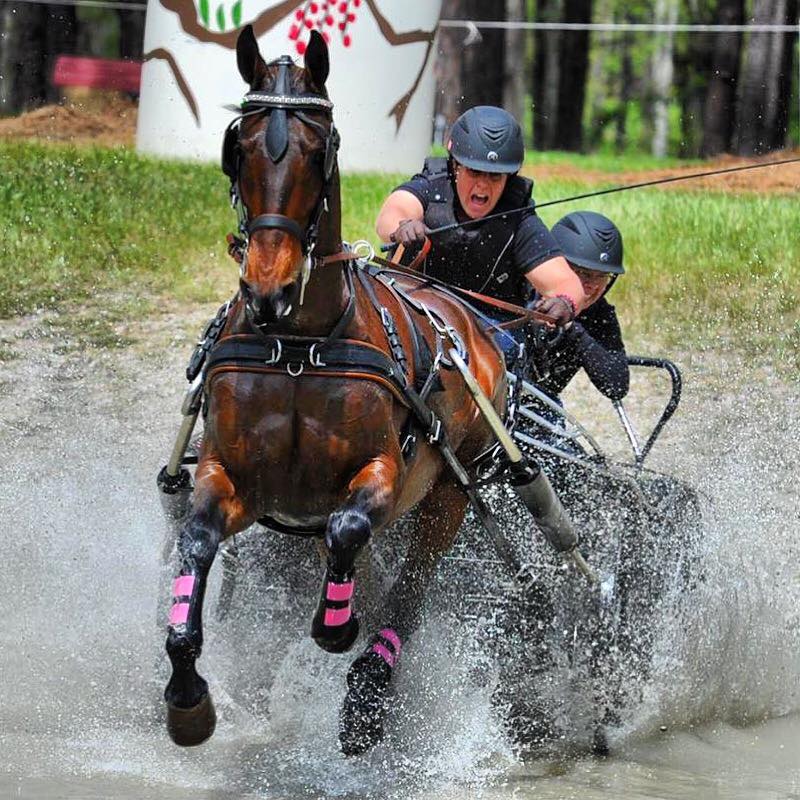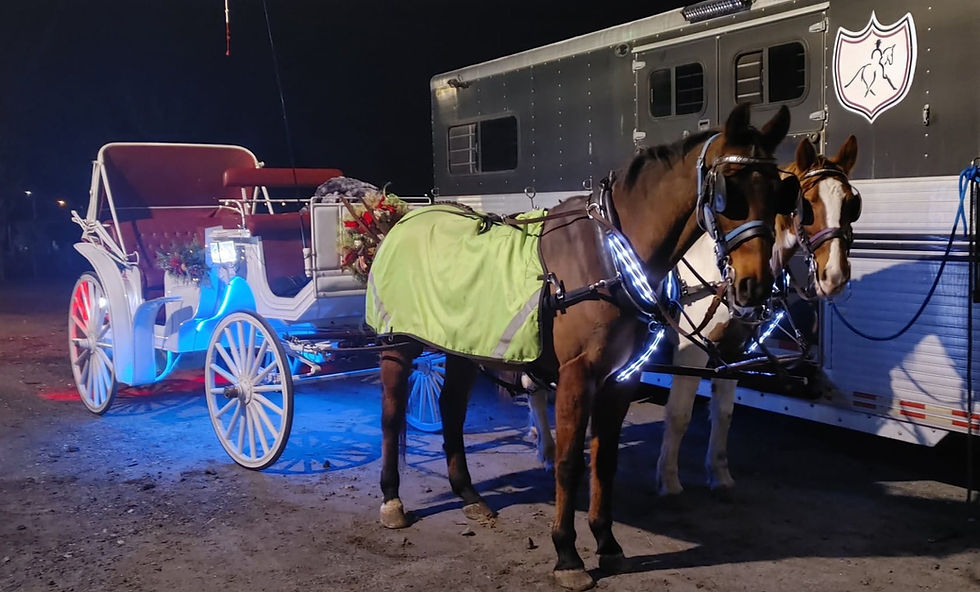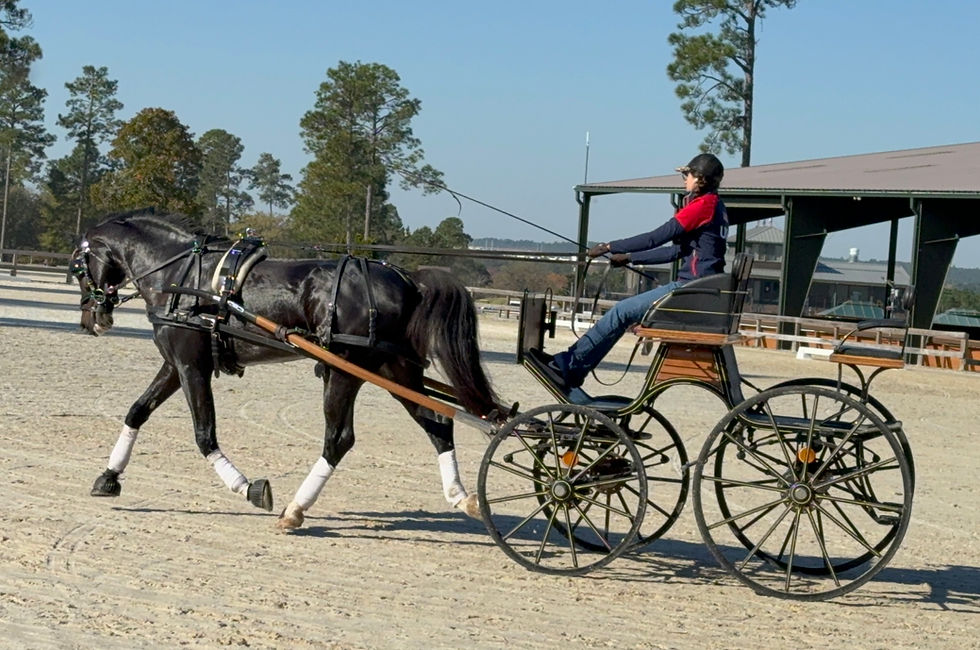The Health Benefits of Driving Horses: Fitness, Focus, and Fulfillment Behind the Lines
- jess3152

- Oct 6
- 3 min read
When most people think of exercise and horses, they imagine riding. But driving—working with a horse in harness while guiding from behind a carriage or cart—offers a full-body workout and a mental refresh that few other sports can match. Whether you’re navigating cones at a combined driving event, taking a leisurely country drive, or schooling a young horse, carriage driving provides numerous physical, mental, and emotional health benefits for both horse and driver.
1. Physical Fitness Without the Strain
Driving might look effortless to the casual observer, but it’s surprisingly physical. Handling reins, whip, and the balance of the carriage engages the arms, shoulders, and core muscles in continuous, controlled motion. Drivers develop strength, coordination, and endurance as they maintain proper posture and communication through the reins.
For those with physical limitations that make riding difficult, driving offers a low-impact yet active way to stay engaged in equestrian sport. Getting in and out of the carriage, harnessing the horse, and maintaining balance over uneven terrain all contribute to functional fitness and improved mobility.
2. Core Strength and Postural Health
Good carriage driving depends on a steady, centered body. Drivers learn to use their core muscles to absorb movement and communicate subtle cues through the reins. This develops stability and postural awareness, much like Pilates or yoga.
Because the hands and torso must move in harmony, driving also encourages bilateral coordination—an important aspect of maintaining balance and reducing back pain. Many experienced drivers notice improved strength and flexibility even off the carriage.
3. Mental Clarity and Focus
Driving requires concentration. The driver must continuously read the horse’s body language, interpret terrain, and plan routes while managing reins and whip with precision. This intense focus promotes mindfulness—a state of being fully present in the moment.
The rhythmic motion of the carriage and the connection with a horse’s movement have a calming effect, reducing stress and anxiety. It’s no wonder many drivers describe their time behind the lines as “therapy for the soul.”
4. Emotional and Social Well-Being
Few things compare to the sense of teamwork between driver and horse. Success in driving—whether it’s a smooth rein back, a clean cones round, or a scenic pleasure drive—comes from trust, communication, and mutual respect. This partnership builds confidence and a deep emotional bond.
Additionally, carriage driving is a wonderfully social sport. From local pleasure drives to national competitions, the driving community is welcoming and multi-generational. Shared experiences—training tips, harness adjustments, and laughter over muddy wheels—foster friendships that enrich life beyond the stable yard.
5. Connection With Nature
Driving takes you outdoors—through woods, fields, and along country lanes where the sounds of hooves and wheels replace the noise of everyday life. This immersion in nature promotes relaxation, reduces blood pressure, and enhances overall mood. Studies consistently show that time spent outside with animals contributes to better mental and cardiovascular health.
6. Lifelong Activity for All Ages
One of the greatest strengths of carriage driving is its accessibility. It’s a sport that can be enjoyed from childhood through advanced age. Many drivers continue competing or pleasure driving well into their 70s, 80s, and beyond. With the right horse and carriage setup, driving provides independence, purpose, and joy for a lifetime.

Conclusion: Wellness on Wheels
Driving horses combines physical exercise, mental focus, and emotional connection in a uniquely rewarding way. It strengthens the body, sharpens the mind, and soothes the spirit. Whether you’re aiming for the marathon course or simply exploring country roads, carriage driving isn’t just a pastime—it’s a pathway to better health and happiness.






Comments